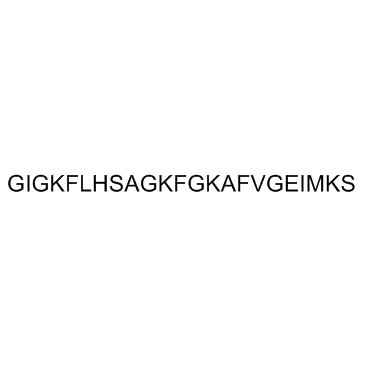| 结构式 | 名称/CAS号 | 全部文献 |
|---|---|---|
 |
马加宁I
CAS:108433-99-4 |
|
 |
Magainin 2
CAS:108433-95-0 |
| 结构式 | 名称/CAS号 | 全部文献 |
|---|---|---|
 |
马加宁I
CAS:108433-99-4 |
|
 |
Magainin 2
CAS:108433-95-0 |